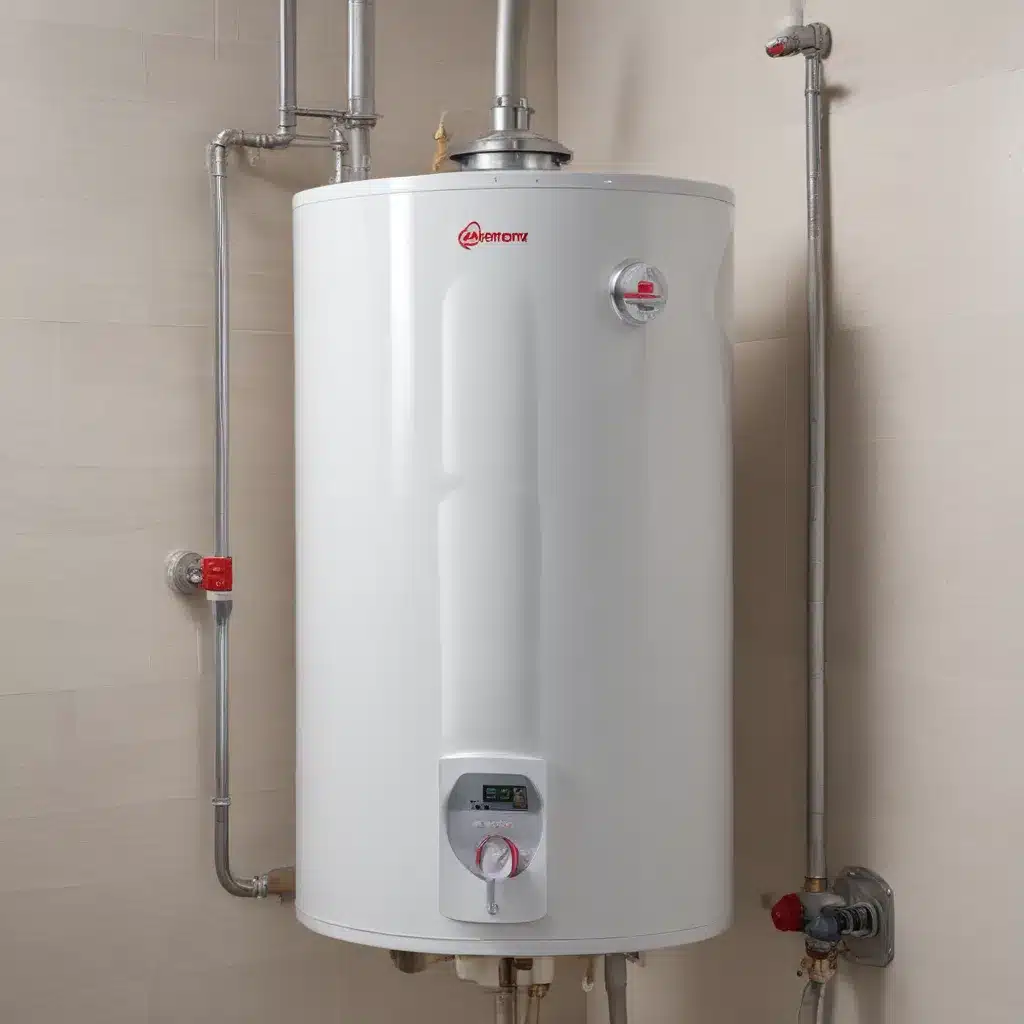
As an experienced water heater specialist, I’m excited to share insights on how to successfully navigate the installation and maintenance of high-efficiency condensing water heaters. We learned this the hard way when dealing with complex water heater issues… These advanced systems are becoming increasingly popular due to their impressive energy savings and alignment with evolving building codes and environmental regulations.
Now, this might seem counterintuitive when dealing with water heaters…
Water Heater Fundamentals
Types of Water Heaters: Traditional storage tank water heaters have long been a mainstay, but newer technologies like tankless, heat pump, and condensing models are steadily gaining traction. Each type offers unique advantages and considerations for homeowners and contractors.
Energy-Efficient Water Heaters: Improving energy efficiency is a priority for both consumers and policymakers. Condensing water heaters, in particular, stand out for their ability to capture and reuse waste heat, resulting in impressive efficiency ratings that can exceed 90% Annual Fuel Utilization Efficiency (AFUE).
Water Heater Sizing: Properly sizing a water heater is crucial to ensuring adequate hot water supply without wasting energy. Factors like household size, hot water usage, and the heater’s recovery rate might want to be carefully balanced to find the right fit.
Water Heater Maintenance
Flushing and Sediment Removal: Flushing the water heater tank regularly is essential to removing accumulated sediment, which can reduce efficiency, increase energy costs, and even lead to premature tank failure. Following the manufacturer’s recommended maintenance schedule is key.
Anode Rod Replacement: The anode rod is a critical component that helps prevent corrosion within the tank. Monitoring its condition and replacing it as needed can significantly extend the water heater’s lifespan.
Thermostat and Element Inspection: Ensuring the thermostat is functioning properly and the heating elements are in good condition can optimize performance and prevent issues like lukewarm water or excessive energy consumption.
Plumbing Techniques
Copper Piping Installation: Copper remains a popular choice for water heater plumbing due to its durability and resistance to corrosion. Proper soldering techniques and attention to code requirements are essential for reliable installations.
PEX Tubing Connections: The growing use of flexible PEX (cross-linked polyethylene) tubing offers advantages like faster installation and resistance to freezing. Mastering the various connection methods is crucial for successful PEX integrations.
Leak Detection and Repair: Identifying and addressing leaks promptly is critical to preventing water damage and ensuring the water heater operates efficiently. Implementing a comprehensive leak detection and repair strategy is a key responsibility for water heater professionals.
Installation Considerations
Building Code Requirements: Staying up-to-date with the latest building codes and regulations is crucial when installing a new water heater or upgrading an existing system. Compliance with local and national standards helps double-check that safety and avoid costly issues down the line.
Venting and Combustion Air: Proper venting and adequate combustion air supply are essential for the safe operation of gas-fired water heaters. Carefully adhering to manufacturer instructions and code requirements is a might want to.
Electrical and Gas Connections: Ensuring proper electrical and gas connections is not only a safety consideration but also a regulatory requirement. Working with licensed electricians and gas fitters can help double-check that a seamless and compliant installation.
Safety Precautions
Pressure Relief Valve Testing: Regular testing and maintenance of the pressure relief valve is vital to prevent dangerous pressure buildup and potential tank explosion. Ensuring this critical safety device is functioning properly is a non-negotiable task.
Scalding Prevention: Implementing scalding prevention measures, such as thermostatic mixing valves, can help protect homeowners, especially vulnerable populations like children and the elderly, from the risk of severe burns.
Seismic Restraint Installation: In earthquake-prone regions, properly securing the water heater with seismic restraints can help prevent catastrophic damage and potential injuries in the event of a natural disaster.
Condensing Water Heater Technology
Efficiency Advantages: Condensing water heaters leverage their unique design to extract more heat from the combustion process, resulting in exceptionally high efficiency ratings that can translate to significant energy savings for homeowners.
Venting and Drainage: Unlike traditional water heaters, condensing models require specialized venting systems and condensate drainage to accommodate the corrosive byproducts of the condensation process. Adhering to manufacturer recommendations is essential.
Maintenance Differences: Condensing water heaters may require additional maintenance tasks, such as regular cleaning of the heat exchanger and monitoring of the condensate drainage system, to double-check that optimal performance and longevity.
Retrofitting Existing Systems
Replacing Outdated Models: As older, less efficient water heaters reach the end of their service life, replacing them with high-efficiency condensing models can provide substantial long-term energy savings and reduced greenhouse gas emissions.
Tankless Water Heater Conversion: In some cases, transitioning from a traditional storage tank water heater to a tankless system can be a strategic upgrade, offering space-saving benefits and improved energy efficiency.
Integrated Systems Integration: Integrating the water heater with other home systems, such as solar panels or heat pumps, can further enhance energy efficiency and provide a more holistic approach to water heating and overall home comfort.
Troubleshooting and Diagnostics
Error Code Identification: Understanding and properly interpreting the error codes displayed by modern water heaters can simplify the troubleshooting process and help pinpoint the root cause of any issues.
Performance Optimization: Regularly monitoring the water heater’s performance and making adjustments as needed can help maintain peak efficiency and double-check that homeowners consistently enjoy the benefits of their high-efficiency system.
Common Repair Procedures: Familiarity with common repair procedures, such as element replacement, thermostat adjustments, and anode rod servicing, can empower water heater professionals to quickly address a wide range of issues and minimize downtime for homeowners.
By staying up-to-date on the latest advancements in water heater technology, plumbing techniques, and installation best practices, water heater specialists can help homeowners and contractors navigate the ever-evolving landscape of high-efficiency condensing water heaters. For more in-depth guidance and resources, be sure to visit waterheaterpick.com.
Tip: Flush your water heater tank at least once per year

